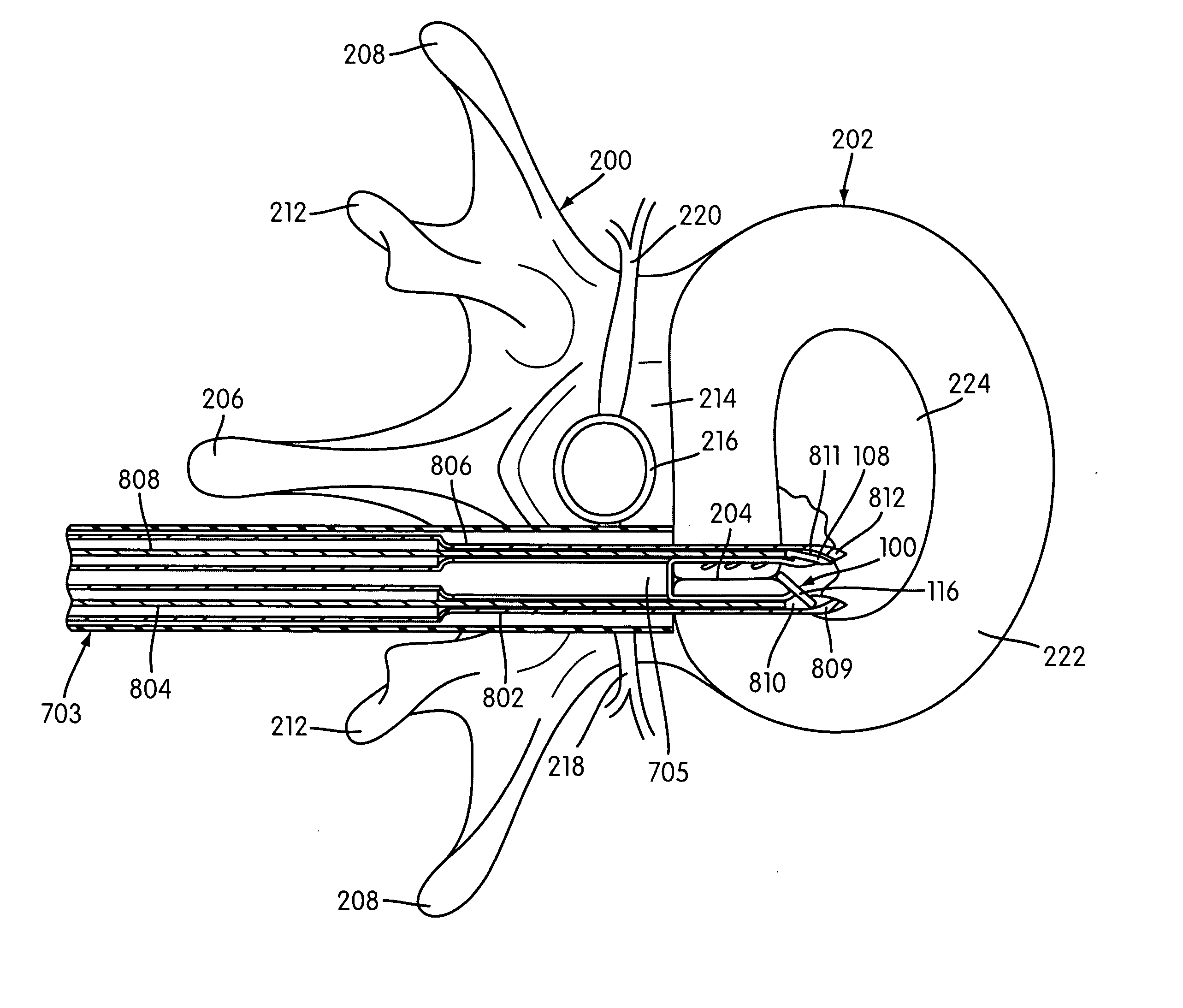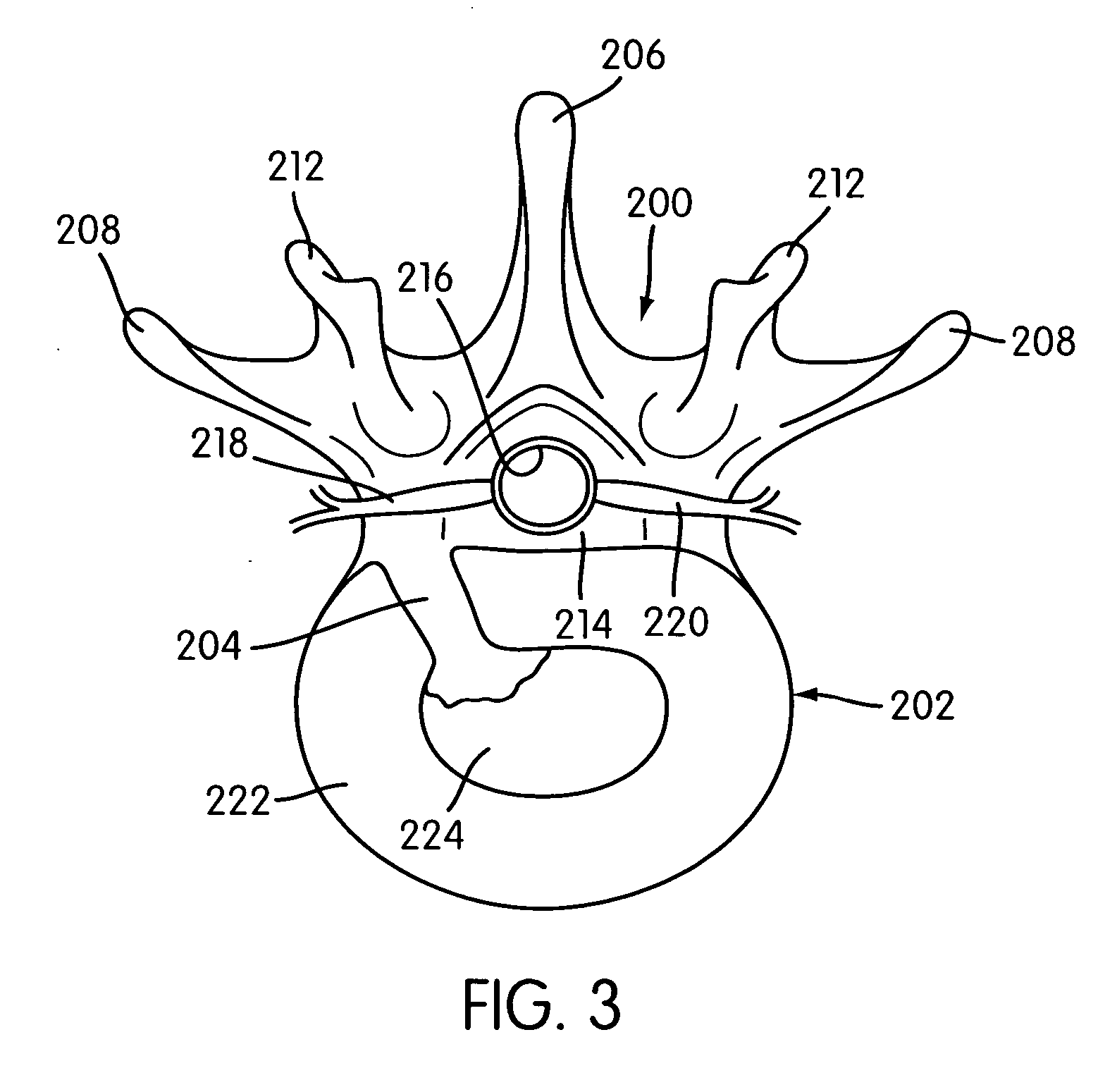Disc annulus repair system
a disc annulus and disc technology, applied in the field of medical devices, can solve the problems of reducing the shock absorption ability of the disc, pain and possibly sensory or motor problems, and traumatic vertebral column, and achieve the effect of increasing the disc axial heigh
- Summary
- Abstract
- Description
- Claims
- Application Information
AI Technical Summary
Benefits of technology
Problems solved by technology
Method used
Image
Examples
Embodiment Construction
[0069]FIGS. 4-6 illustrate one embodiment of a closure prosthesis 100 that is adapted to close a flaw, imperfection, cut, incision, hole, or tear in an intervertebral disc 202. Specifically, FIGS. 4 and 5 are plan views of a single vertebra 200 and its associated intervertebral disc 202, illustrating the association of the closure prosthesis 100 with an intervertebral disc 202, and FIG. 6 is a perspective view illustrating the closure prosthesis 100 in isolation.
[0070] Although one particular embodiment of the closure prosthesis 100 is illustrated in those figures, the size, shape, and other characteristics of the closure prosthesis 100 may be determined based on a number of factors, potentially including the size and shape of the imperfection; the condition and type of tissue into which the closure prosthesis 100 is to be deployed; and the type and amount of circumferential or other stress that is to be exerted by the closure prosthesis 100 on the surrounding tissue. Recall that t...
PUM
 Login to View More
Login to View More Abstract
Description
Claims
Application Information
 Login to View More
Login to View More - R&D
- Intellectual Property
- Life Sciences
- Materials
- Tech Scout
- Unparalleled Data Quality
- Higher Quality Content
- 60% Fewer Hallucinations
Browse by: Latest US Patents, China's latest patents, Technical Efficacy Thesaurus, Application Domain, Technology Topic, Popular Technical Reports.
© 2025 PatSnap. All rights reserved.Legal|Privacy policy|Modern Slavery Act Transparency Statement|Sitemap|About US| Contact US: help@patsnap.com



